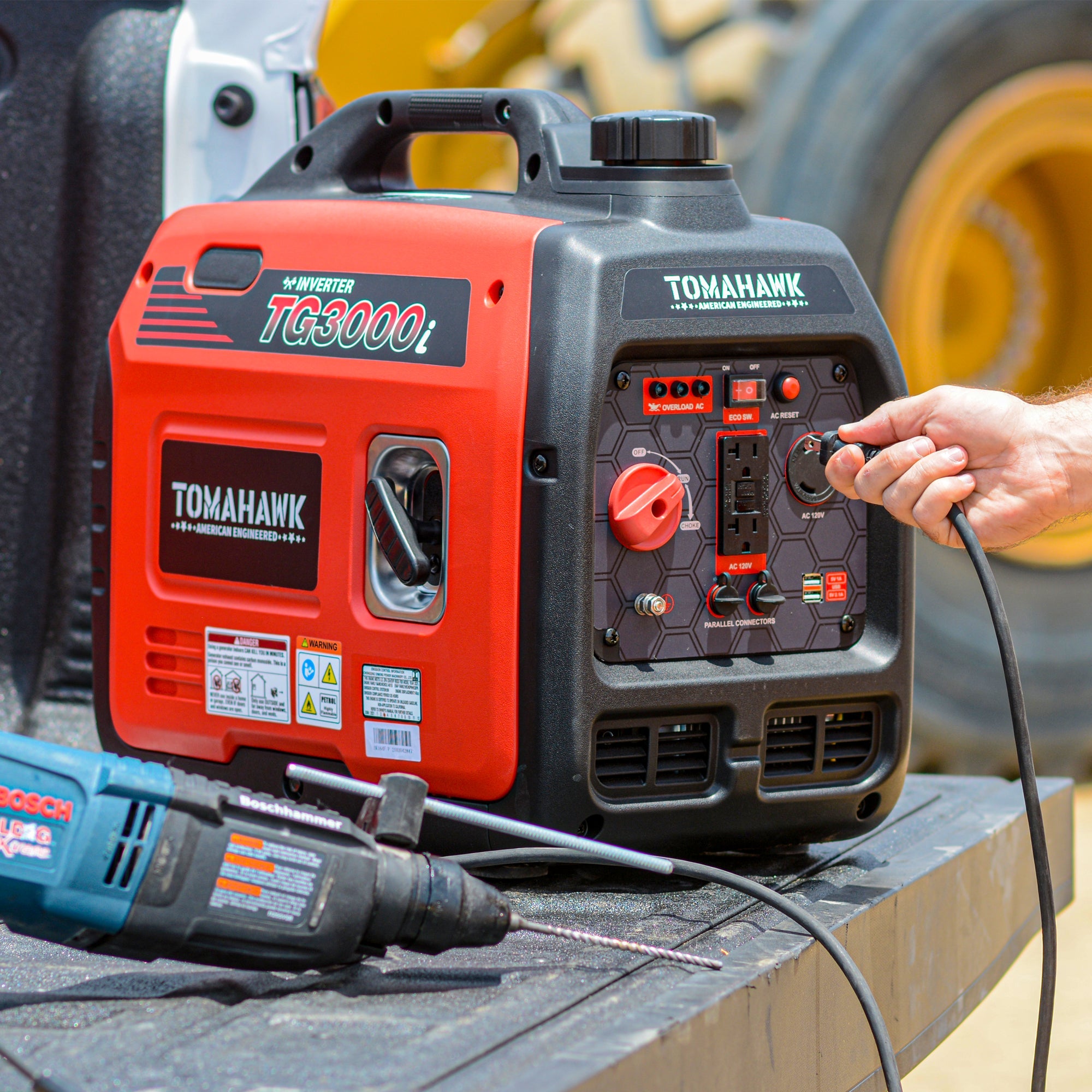Generators are powerful tools that can keep you working during power outages, on remote job sites, or while camping. However, improper use of generators can lead to dangerous situations, including fires, carbon monoxide poisoning, and electrical hazards. To ensure you are using your Tomahawk generator safely and efficiently, it’s essential to follow some basic safety guidelines. Here’s a helpful guide to the Do’s and Don’ts of running your Tomahawk generators.
The Do’s: Safe Generator Operation
-
Do Read the Manual Before using your Tomahawk generator, take the time to read the manufacturer's operating instructions. Each model, whether it’s the Tomahawk TG3000i Inverter Generator or the Tomahawk TG9000i Generator, comes with specific safety and maintenance procedures to follow for optimal performance.
-
Do Use the Generator Outdoors Always operate your Tomahawk generator outdoors in a well-ventilated area. Generators produce carbon monoxide, a colorless, odorless gas that can be deadly if inhaled in confined spaces. Keep your generator away from windows, doors, and vents to prevent exhaust fumes from entering enclosed areas.
-
Do Ground the Generator Ensure your generator is properly grounded to avoid the risk of electrical shock or fire. Follow the manufacturer’s instructions for grounding to ensure a safe connection between the generator and your tools or appliances.
-
Do Use Heavy-Duty Extension Cords If you need to connect your generator to power tools or other appliances, use heavy-duty, outdoor-rated extension cords that can handle the power load. Make sure the cords are free from damage and are rated for the wattage of your generator. For example, when running tools like Leister heat guns with your Tomahawk TG3000i, a proper cord ensures safe operation.
-
Do Turn the Generator Off Before Refueling To prevent fuel spills, fires, or burns, always turn off your Tomahawk generator and allow it to cool before refueling. Refueling while the generator is running or hot is a fire hazard.
-
Do Inspect the Generator Regularly Perform routine inspections and maintenance on your generator to ensure it remains in top working condition. Check the oil levels, air filter, spark plug, and fuel lines regularly, and replace or clean as necessary. Proper maintenance extends the life of your generator and ensures reliable performance when you need it most.
-
Do Test Your Generator If you don’t use your generator frequently, be sure to test it periodically to ensure it’s working properly. Running your Tomahawk generator for a short time will also help keep the engine lubricated and battery charged (if applicable).
The Don’ts: Avoiding Generator Hazards
-
Don’t Operate the Generator Indoors Never run your generator indoors or in enclosed spaces like garages, basements, or sheds. The carbon monoxide produced by the generator’s exhaust can build up quickly, creating a serious risk of poisoning. Always use the generator in a well-ventilated outdoor area.
-
Don’t Backfeed Power Into Your Home Do not connect your generator directly to your home’s electrical system or attempt to backfeed power through a wall socket. This dangerous practice can result in serious injury to utility workers and damage to your home’s wiring. To safely power your home, use a professionally installed transfer switch or generator inlet box.
-
Don’t Overload the Generator Be mindful of your generator’s power capacity. Overloading your Tomahawk generator by connecting too many appliances or tools can cause the generator to overheat, damage the engine, or trip the circuit breaker. Make sure you know the total wattage of the devices you’re powering and stay within the generator’s rated limits.
-
Don’t Operate in Wet Conditions Avoid running your generator in the rain, snow, or other wet conditions. Water and electricity are a dangerous combination, and using your generator in wet environments can increase the risk of electrocution. If you need to use your generator in bad weather, invest in a generator canopy or enclosure that allows for ventilation while protecting it from the elements.
-
Don’t Store Fuel Near the Generator Keep fuel stored safely away from the generator to reduce the risk of fire. Only store fuel in approved containers, and never store it inside your home. Make sure the generator is cool before refueling to avoid the risk of fire or explosion.
-
Don’t Modify the Generator Do not attempt to modify or bypass the safety features of your generator. Tampering with safety controls, such as removing or bypassing the automatic low-oil shutoff or modifying the fuel system, can result in severe damage to the generator or injury to the user.
-
Don’t Run the Generator Unattended Always keep an eye on your generator when it’s running. Unattended generators can overheat, malfunction, or pose other risks if something goes wrong. If you need to step away for an extended period, shut off the generator until you return.
Safety First with Tomahawk Generators
Whether you’re using the Tomahawk TG3000i for powering tools on a roofing job, the TG2000i for camping, or the TG5500i for larger job sites, following these do’s and don’ts ensures that you operate your generator safely and efficiently. By adhering to these guidelines, you’ll get the most out of your Tomahawk generator while protecting yourself, your equipment, and those around you.
Remember, generator safety isn’t just about getting the job done—it’s about getting it done right. Follow these tips, and your Tomahawk generator will serve you well for years to come










